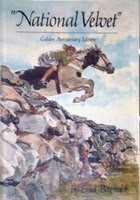by John and Deborah Behler
 In the middle of reading The Long African Day, a passage about Nile crocodiles caught my interest. I know little about them, so I looked through my shelf and found another book specifically about these aquatic reptiles. Alligators and Crocodiles is an overview of all the crocodilian species: two kinds of alligators, six species of caiman, thirteen different crocodiles and the two gharials (an animal I never heard of before). The book is full of stunning photos- some of the large gators and crocs look very sinister and remind me that crocodiles are an ancient species that existed alongside dinosaurs. Others, especially the young caimans, strike me with the beauty of their patterned scales, and their fierce toothy grins. Although the book clearly explained the difference between alligators and crocodiles I know I still couldn\’t distinguish the two even if they were floating side by side!
In the middle of reading The Long African Day, a passage about Nile crocodiles caught my interest. I know little about them, so I looked through my shelf and found another book specifically about these aquatic reptiles. Alligators and Crocodiles is an overview of all the crocodilian species: two kinds of alligators, six species of caiman, thirteen different crocodiles and the two gharials (an animal I never heard of before). The book is full of stunning photos- some of the large gators and crocs look very sinister and remind me that crocodiles are an ancient species that existed alongside dinosaurs. Others, especially the young caimans, strike me with the beauty of their patterned scales, and their fierce toothy grins. Although the book clearly explained the difference between alligators and crocodiles I know I still couldn\’t distinguish the two even if they were floating side by side!
I learned lots of interesting facts- did you know that the temperature in a crocodilian\’s nest determines what sex the hatchlings are? and they are dependent on heat to aid digestion- if their body temperature falls too low, the digestive enzymes don\’t function. I didn\’t know that while crocs can snap their jaws shut with great force, the muscles that open the jaws are relatively weak, and can easily be held closed with a rope or thick rubber band! or that some species dig burrows into mud banks, or that mother crocs are quite maternal, assisting their hatchlings to dig out of the nest, guarding them and sometimes carrying them about in her jaws. While I still find crocodiles and their relatives fearsome and unattractive beasts, I have to admit they are fascinating animals, successful predators well-adapted to their aquatic environment. There\’s a lot more interesting information on crocodiles and alligators in this book, although sometimes I felt that it was crowded out by all the stats on conservation (a trait it shares with the Pandas book, and probably the other one I have of the WorldLife Library, Killer Whales).
Rating: 3/5 72 pages, 1998









